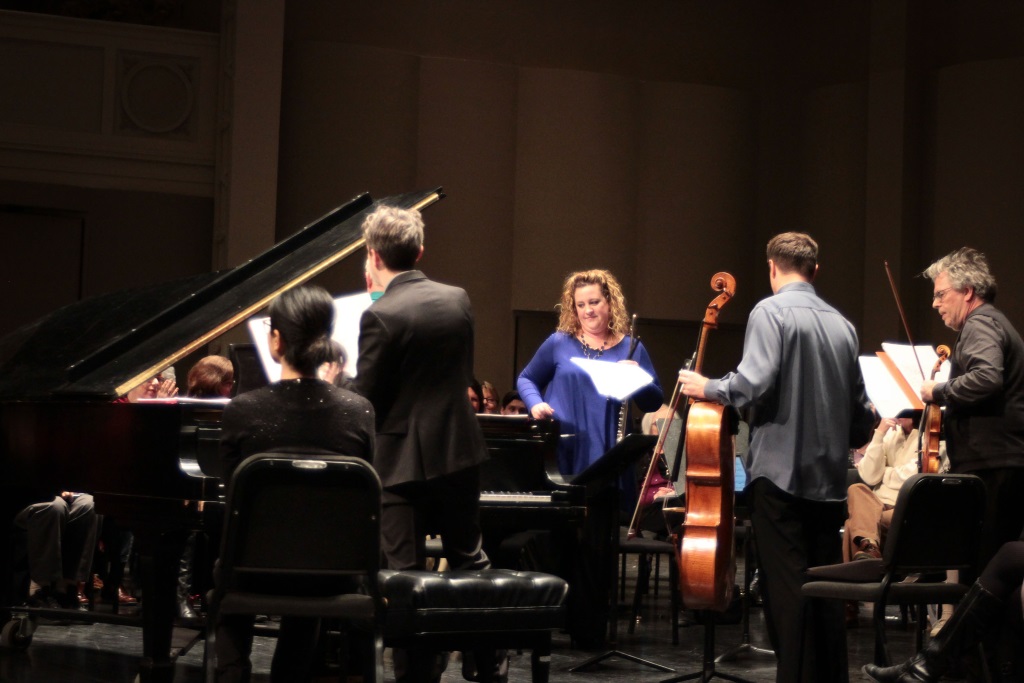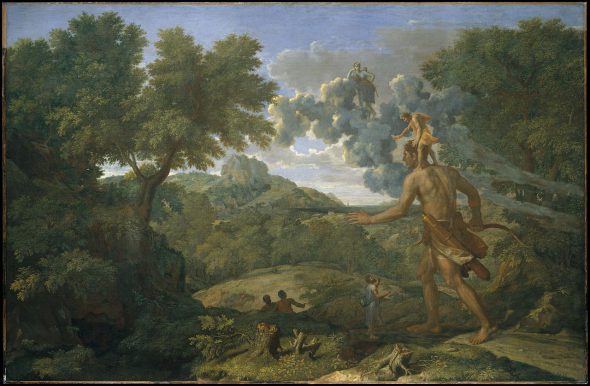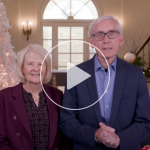12 Short Works By Musical Giants
And performed in three different venues. That's how Present Music rolls.
This week Present Music offers a series of concerts – on Thursday through Sunday – as a part of an “In the Chamber” series featuring contemporary chamber works performed in a variety of intimate spaces. This year’s program, Giants in the Chamber, connects the lines between legendary composers and the music of today. The quintet of players is drawn from the core Present Music ensemble – Jennifer Clippert (flute), William Helmers (clarinet), Eric Segnitz (violin), Adrien Zitoun (cello), and Cory Smythe (piano).
Artistic Director Kevin Stalheim explains the conceit for this concert: “Every composer on this concert (except for one) is dead—a first for Present Music. But each of them had an enormous influence on the living composers that we commission and perform.” An 1159 observation by John of Salisbury sets the theme: We are “dwarfs perched on the shoulders of giants. We see more and farther than our predecessors, not because we have keener vision or greater height, but because we are lifted up and borne aloft on their gigantic stature.”
There are lots of giants on the program, which includes 12 short works.
French composer Claude Debussy‘s solo flute work, Syrinx (1913) seems an appropriate place to begin. Widely regarded as one of the most influential composers of the 20th century, Debussy “was one of the first composers who broke away from the necessity of a singular line melody as the basis of structure. He used color and texture as a means of structure – not linear melody or harmonic progressions, ” says Present Music Executive Director Meaghan Heinrich
Olivier Messiaen, a later French c0mposer, followed Debussy’s lead; creating intense colors. Smythe will play a section of his piano work, Regard de l’Esprit de Joie (Gaze of the Joyful Spirit) from Vingt Regards sur l’Enfant-Jésus (1944). This challenging work seems to always be in motion. Left and right hands often work independently, simultaneously trending louder and softer or accelerating and decelerating. As an intensely religious man, Messiaen also infused the work with a color palette encoded with sacred symbolism.
By contrast, György Ligeti‘s Poème Symphonique for 100 Metronomes (1962) offers ‘color’ in black and white. The dense clicks of 100 mechanical metronomes create a forest of sound as the metronomes click at varying paces and eventually decay to silence.
The line of works exploring color ends with Three Short Pieces (2014), a recent work by living composer, Alexandre Lunsqui.
A separate thread will be explored in a work by Colon Nancarrow: Canon B (2/3) from Two Canons for Ursula (1988). Nancarrow has explored density in music by composing piano music for use with piano rolls. The programmed rolls can replicate sound no pianist can play. Canon B, although written for solo pianist, can be challenging. The canonic form achieves similar dense effects. Stalheim refers to the work as “Row, Row, Row Your Boat on steroids.”
The rest of the program explores dance rhythms, long a source of energy in classical composition. The familiar Romanian Folk Dances (1915) by Béla Bartók represents a faithful reflection of exotic rhythms from villages of Eastern Europe. Bartók’s later Presto from Sonata for Solo Violin (1944) explores similar rhythms in a more contemporary vein.
A Scott Joplin Searchlight Rag (1907) is paired with a Charles Ives Ragtime Dance (1912) which layers the rag melodies, changes the tonality and transforms the traditional experience.
The concert offers tango music adapted for concert by Astor Piazzolla – Libertango (1974) – and Igor Stravinsky – Tango (1940). Piazzolla’s band featured bandoneon, a Latin American accordion. Violinist Segnitz has distributed the chords of the bandoneon across violin, clarinet and flute in this adaptation.
Where are the village dances, rags and tangos in current composition? Heinrich suggests that the featured composers “were taking the dance music of the time and turning it into more complex artistic compositions. Today’s composers take rhythms of current popular music – especially electronic, indie rock songs and hip hop tunes – to create something more thoroughly composed as art music.”
A major point of the chamber music series has been to provide intimate settings so that the audience will feel they are a part of the music. The venues are very different. A house concert has been sold out. At Brenner Brewing Company Thursday evening, visitors can take a brewery tour and carry a beer to their seat. “We’ve worked with the brewery to pair concert pieces with five artisan beers,” Heinrich points out. A Friday morning concert at Villa Terrace offers coffee and pastry and, weather permitting, sunlight through the lakeside windows of the Great Room. At UW-Milwaukee’s Zelazo Center on Sunday afternoon, the audience will sit on the stage along with the musicians.
Present Music specializes in musical adventure. The chamber series offers a more personal series of options, a way to experience music at once familiar and evolving in new directions that inspire musicians today.
Present Music performs Thursday, February 16, 2017 at 7:30 p.m.: The Pitch Project Art Gallery at Brenner Brewing Co., 706 S. 5th Street.
Friday, February 17, 2017 at 11 a.m.: Villa Terrace Decorative Arts Museum, 2220 N. Terrace Avenue.
Sunday, February 19, 2017 at 3 p.m.: Helene Zelazo Center for the Performing Arts at the UW-Milwaukee, 2419 E. Kenwood Boulevard.
Tickets are $15/25/35 (depends on seating). Student tickets are half-price.
Click here to buy tickets or call the Box Office at 414-271-0711 (M-F, 10 a.m. to 2 p.m.).
For the next concert on April 29, Present Music’s offers a first-ever collaboration with the Milwaukee Public Museum in a show called Time, Nature, Culture and Sound. Groups of visitors will move from floor to floor to experience music matched with museum exhibits.
Preview
-
A Sacred Choir, 70 Voices Strong
 Dec 14th, 2025 by Martha Brown
Dec 14th, 2025 by Martha Brown
-
Prometheus Trio Goes Bohemian
 Dec 3rd, 2025 by Martha Brown
Dec 3rd, 2025 by Martha Brown
-
Present Music Offers New Choral Works
 Nov 20th, 2025 by Michael Barndt
Nov 20th, 2025 by Michael Barndt





















